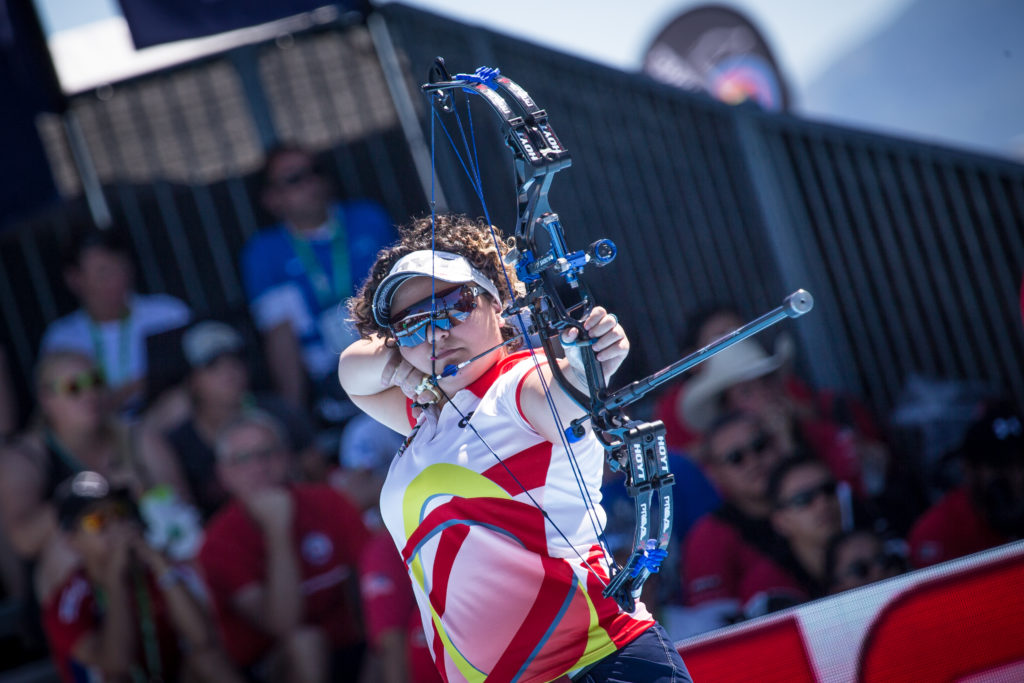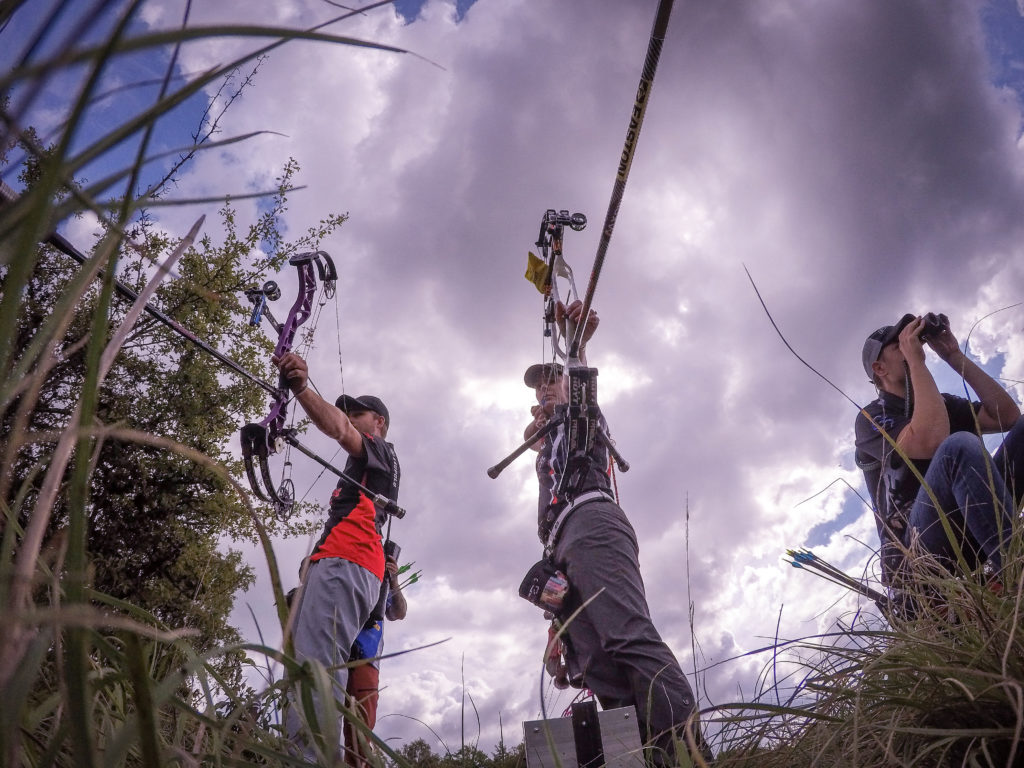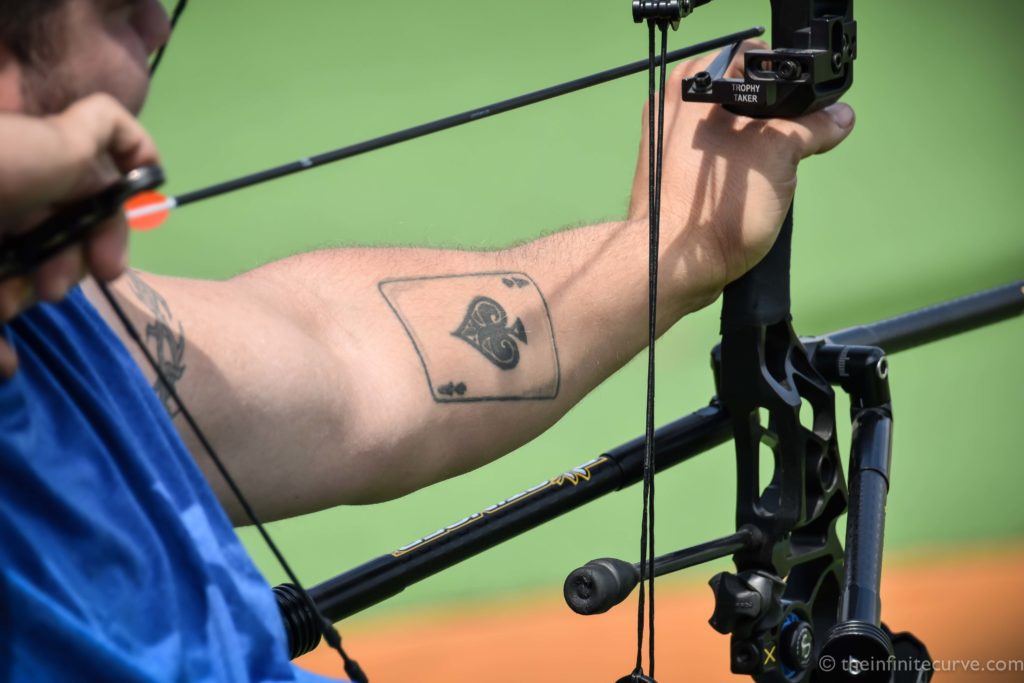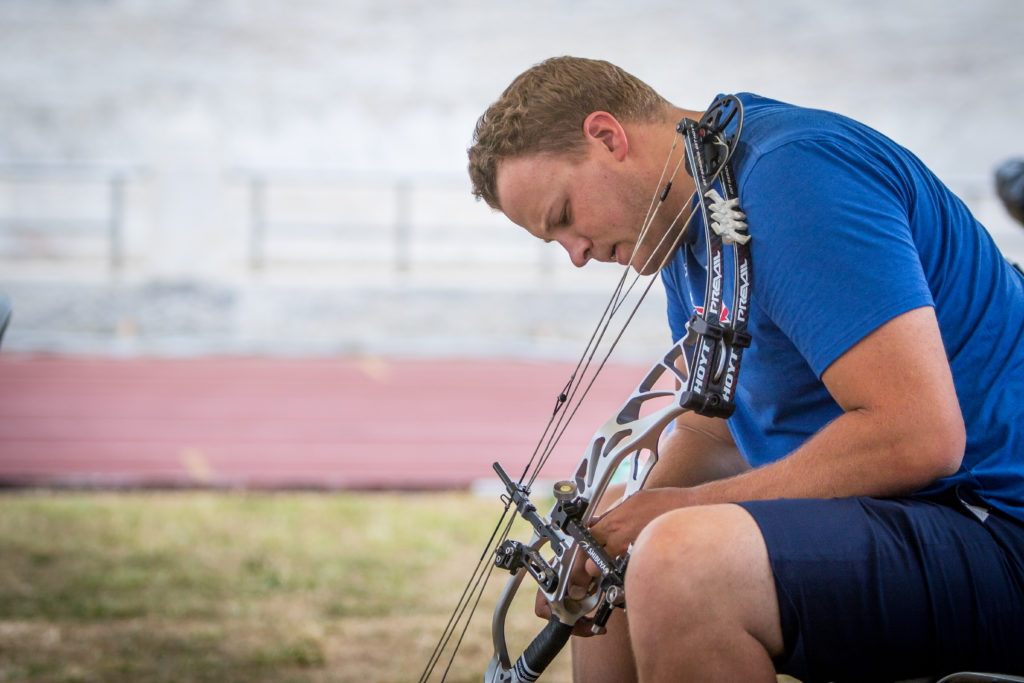Roy Rose, in this compound-focused piece, talks us through developing a bulletproof process.
Every archer, no matter what discipline is involved, whether you are a world champion or just plinking away in the backyard, shoots with the same objective: to hit what they’re aiming at. So what constitutes the mental process that makes that objective a reality?
Whether recurve or compound, that critical few seconds from when the arrow is drawn from the quiver, until it exits on its journey to the target, determines the quality of duplication the competitive archer seeks. In the final analysis, the capacity of the shooter to produce perfect repetition of form and execution is the ultimate determining factor as to the level of accuracy. After all, your scoring really happens at the shooting line and is only totalled up at the target.
Every archer obviously is seeking both the physical and mental power to cause that brief period of activity to be as comfortable and apprehension free as possible.
Our sport is repeatedly referred to as more of a mental than a physical challenge. Every elite competitor will seek a thought process which ensures that their form, and particularly their execution, is as repeatable as possible when married to a physical series of actions.
So what is the mental focus, the thinking pathway, that is happening during that brief period between the nocking of the arrow and its eventual departure on a path to the target?
Obviously, individual champions will have their personal idiosyncrasies as to how they think through each shot. No matter what your experience, no matter what your usual composure may be, top level competition situations will test your mental, and consequently, your physical ability, to master the art of repetition.
Televised tournament events really do show us that even the elite still suffer from mental stress and nerves. The question is often how those nerves might be labelled. In my many decades as both a competitive recurver and a compounder and as a constant observer of the very best shooters in competition since the sixties, I have reached a number of conclusions which many of the greats incorporate in their thinking and which have worked for me.
My initial efforts at national level were marred by anxiety and target panic as the final ends eventuated, and coming to terms with these crises became a major priority early on. What finally gave me composure was developing a strong mental thought process that mirrors that of the many great archers I’ve communicated with over the decades.
It may not the answer for everyone, but it does incorporate steps which can alleviate composure issues and may well enhance your ability to function with a higher degree of comfort.
At the edges
Essentially the theory at work is to direct your mental focus to the very extremities of the form and execution phases. In other words, having the front focus on the target, and the rear focus at the elbow of the drawing arm at anchor; rather than being engaged mentally with the dot of the sight, and what is happening with the hand on the string for the recurver and the hand on the release aid for the compounder.
I personally utilise a quite large circle aperture, no dot, and simply focus on looking at the gold and allowing the eye’s natural centering facility to operate. I also divorce my mind away from the release aid, and place my attention on the motion of the rear elbow.
In effect, I take my thinking away from the bow and the release as such, and centred on the gold out front, and the elbow at the back. I practise this on a blank bale at close range religiously, looking and being pro-active at the rear part of the elbow. Look and expand. I repeat that this thought process is not necessarily some magic solution, and is but one method elite archers incorporate.
What it does do, is alleviate two of the concerns many archers have, over emphasis on the aiming aspect, and mental focus on the release hand, and what is happening there.
I have always believed that aiming is looking, as it is in so many sports, and that, despite it is not often visually evident, that one must be pro-active in execution. What is imperative is to seek out a form and execution procedure initially, and having come to a conclusion, resist the human desire to fiddle and reassess – and fiddle some more. This has long been my salient message, and every archer must comprehend that change is an antonym to repetitiveness.
Your own personal blueprint
If you are an aspiring compounder in particular, establish your own personal blueprint. Form a long and deep association with your release aid, and how you use it, resist the usual human impulse for change, practice all this over and over ad nauseam and only then will you be the best you can be.
There is a positioning at anchor where the comfort level is an obvious physical “feel”, where the angle of the release in the hand makes that pulling motion at just the critical line to embrace the scapula, where the shot breaks almost by thought rather than conscious motion.
Because we just know this execution phase exists and because we watch the champions performing with that seems effortless rhythm and fluency, the danger is that our search will become a continuous journey. It is vital that we attain a speedy destination, rather than turn our archery existence into one long avenue of search and apprehension.
Only when we settle on our physical and mental pathway can it be honed to religious repetition. Change can be a life necessity in many instances, but to the aspiring archer it is the enemy if it becomes an ongoing quest.
If we have a state of mind which constantly suggests we explore some new and superior method, which supposedly will transform our accuracy level, then we place ourselves at absolute odds with the basic premise of duplicative functioning.
It is not natural for a newcomer to explore the physical and mental parameters in devising a real routine: which bow, what poundage, which release aid model, which execution procedure, but there has to be a point before frustration takes hold, where decisions must be made, and a pathway must be decided upon, and then stick with it, and practice status is the sole intent.
Every release aid works superbly for someone, every shot execution pathway has been travelled successfully before you came along, so decide your mode of operation and be assured it will serve you well if you practice it religiously and refrain from the human desire of assessment, judgement and change.
Each individual needs to ascertain the angle at which the release is held, the post tension, and thumb placement, if a thumb trigger is employed, and the actual pathway, the pull or expansions takes, to cause that eventual break of the shot.

Essentially the theory at work is to direct your mental focus to the very extremities of the form and execution phases
A host of physical aspects are at work, along with the need for mental calmness, for working without apprehension, through the sequence, to completion.
The archer’s actual physical make up of shoulder width, draw length, finger length and placement, as well the eventual angle at which the release comes to rest at anchor; all these come together to create a very personal feel, which needs to be there, shot after shot after shot.
When achieved, the archer has his or her own fluent, trustworthy process from nocked arrow to despatch to the target. This is the goal for us all.
Searching out this perfect personal pathway can take some time and patient experimentation, but it must be settled upon relatively quickly, as having one’s form and execution in a state of flux, where repeated assessment, and subsequent change is occurring, spells disaster for attaining duplication which must be our goal.
Seek a comfortable form and execution process, and then practise it over, and over, and over, resisting change, and you will be on your way to being the best you can be.




